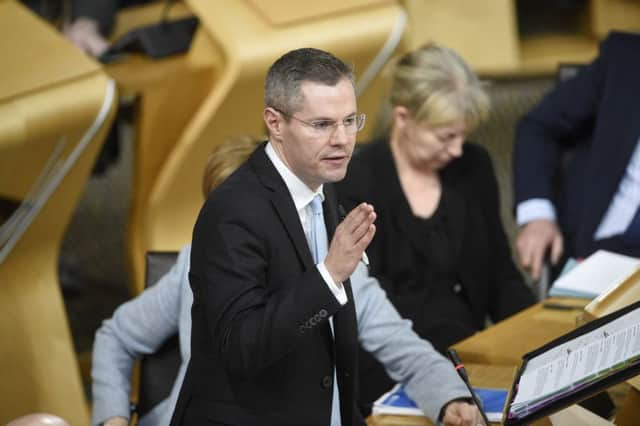Has the Scottish budget increased or decreased since 2011?


At a meeting of the finance committee on January 11, Tory MSP Murdo Fraser argued the Scottish budget had increased in real terms between 2010/11 and 2017/18.
But Mackay replied there had been a real terms reduction in the Government’s discretionary spending.
Advertisement
Hide AdAdvertisement
Hide AdPointing to the draft budget - which shows an increase from £34.2bn to £37bn - Fraser then asked whether Mackay had “got his sums wrong”.
To understand how two such contrasting viewpoints can be arrived at, the Fraser of Allander Institute at the University of Strathclyde examined the figures.
The institute said it was important to understand the different components of the Scottish budget.
“The total amount of money the government spends in a given year is known as Total Managed Expenditure (TME). The budget table that showed a rise in the Scottish budget that Mr Fraser was referring to was TME,” said a spokesman.
TME is split into two components – Department Expenditure Limit spending (DEL) and Annually Managed Expenditure (AME).
“AME typically covers the elements of spending that cannot be easily controlled by a fixed limit each year and are instead driven by demand.
“The Scottish Government’s AME budget is £6.5bn in 2017/18. This has increased by 27 per cent in real terms since 2010/11.
“AME includes the income from Non-Domestic Rates which the Scottish Government has discretion over. Such income has increased 14% in real terms between 2010/11 and 2017/18.
Advertisement
Hide AdAdvertisement
Hide Ad“But the majority of AME is accounted for by the payments made to retired Scottish public sector workers in respect of their pension entitlements built up over the years.
“While this element of AME is administered by the Scottish Government - largely from the Pension Agency in Galashiels - these payments are made by the UK Government. In reality the Scottish Government has no discretion over this element of the budget.”
The elements of DEL spending are fiscal revenue DEL (RDEL) of £26.5bn in 2017/18 (down just over 6 per cent since 2010/11), non-cash DEL of around £1bn in 2017/18 which is a technical accounting adjustment and not real money that can be spent on goods or services, and capital DEL (CDEL) which was just over £3bn in 2017/18 (down 16 per cent since 2010/11) and is the amount the government has for new capital investment, such as schools and hospitals.
“In terms of discretionary spending, and the amount the government has to spend on day-to-day public services such as schools and hospitals, in our view the most appropriate measure is to consider the government’s budget for RDEL, CDEL (including financial transactions), and the element of AME that is derived from non-domestic rates income,” the spokesman continued.
“On this measure the budget has declined by around five per cent in real terms since 2010/11. As a result of constitutional reform, added to this should be the new borrowing powers which allows the government to boost its capital spending – which would lead to the discretionary element falling by 3.8 per cent.”
“From now on, the Scottish Government RDEL budget will vary depending upon the tax performance and policy choices of the Scottish Government. The net effect of these in 2017/18 is £70m,” the spokesman added.